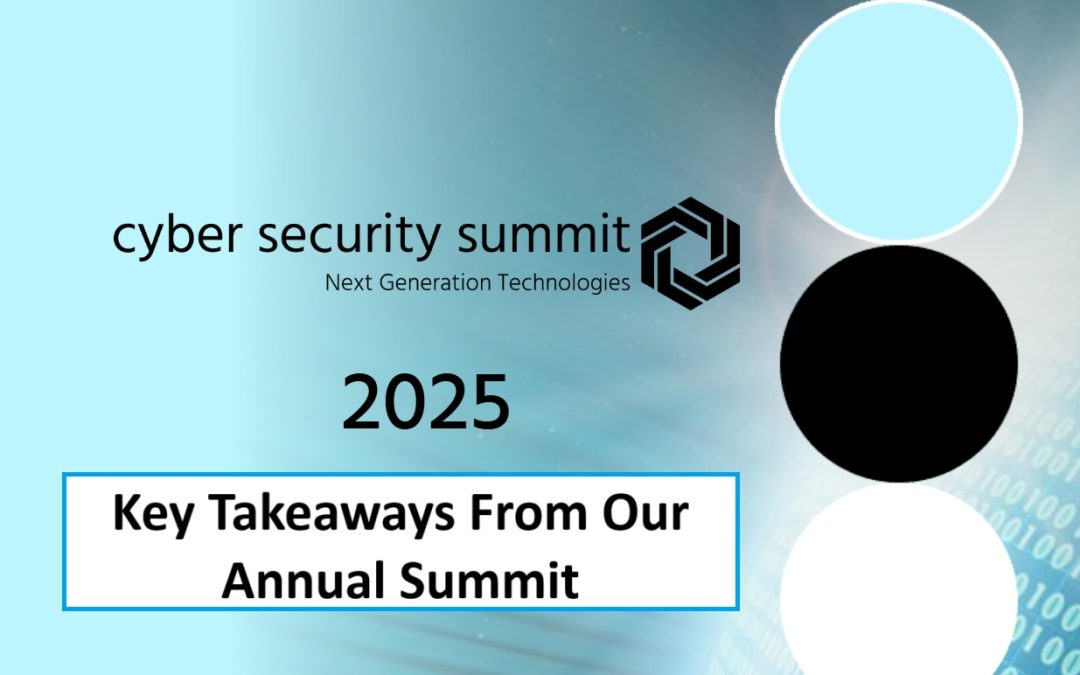3 Weeks Since Our 3rd Cyber Security Summit:
Key Takeaways from NGT’s 2025 Cyber Security Summit
NGT’s third annual Cyber Security Summit was held three weeks ago on September 16. A big thank you to our sponsors: WCTA, Farmers Trust & Savings Bank, Diamond Jo Casino, Hogan Hansen, Farmers State Bank, and Exclusive Networks. We also want thank all those who participated and made the event a success! NGT encourages our clients and partners to take the L.E.A.D. in the world of Information Security.

Our theme for 2025 was to ARM staff with the tools they need to join the fight.
The event consisted of multiple phases. In the first phase participants took the role of the red team (the attackers) giving them an opportunity to consider how they would use recon, social engineering, and phishing to gather sensitive information from a fictional company. The team with the best attempt continued as the red team while other participants switched to the blue team (the defenders) as the subsequent phases of the red team attack were carried out.
In the subsequent phases of the Cyber Security Summit the red team would gain access to one of the fictional company’s user accounts. The blue team discovers the incident and manages to lock the account but the red team placed a backdoor before the lockout, allowing them to regain access. In the final phase, the red team manages to gain access to the company’s public facing website and setup malicious redirects and spam messages for anyone visiting the company website.
After completing the scenario, NGT has three takeaways from the summit:
- Cybersecurity Incidents Require Many Resources
Responding to a cybersecurity incident can be resource intensive and often requires multiple departments coordinating together. Incident response teams should likewise be established with members from across the organization, including the IT Department, Management, HR, Finance, and others.
Staff members who are not part of the incident response team also have responsibility for reporting suspicious activity, alerts, and communications. Cybersecurity incidents are the responsibility of all staff within the organization.
- Develop an Incident Response Policy and Procedure
Incident response policies and procedures should cover every facet of how the organization handles incidents. Everything from discovery of an incident, determination of its existence and scope, reporting, containment, required notifications, how it is isolated or eradicated, recovery steps, and documenting the whole incident with any lessons learned.
- Strong Security Controls are a Necessity
The best time to implement security controls was yesterday. The next best time to implement security controls is now. Strong security controls are the preventive measures you take to reduce your likelihood of encountering incidents. Examples include controls like using unique and strong passwords, enabling Multi-Factor Authentication, or limiting which users can access important files.
Controls should be implemented across all systems before any security event ever occurs. Risk mitigation is determined by the threats and vulnerabilities affecting each asset and the organization’s risk appetite (how willing they are to accept a given risk).
Cybersecurity is a team effort, and we had great team participation at the 2025 Cyber Security Summit. We are looking forward to next year where we help organizations defend what matters most.
As always, NGT is here to help!
Contact ngthelp.com with questions.
